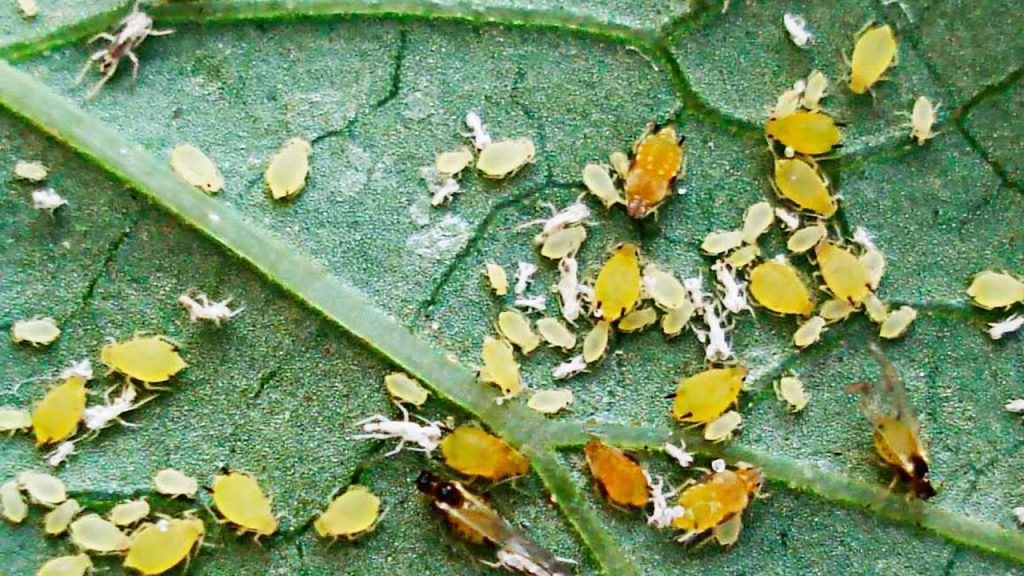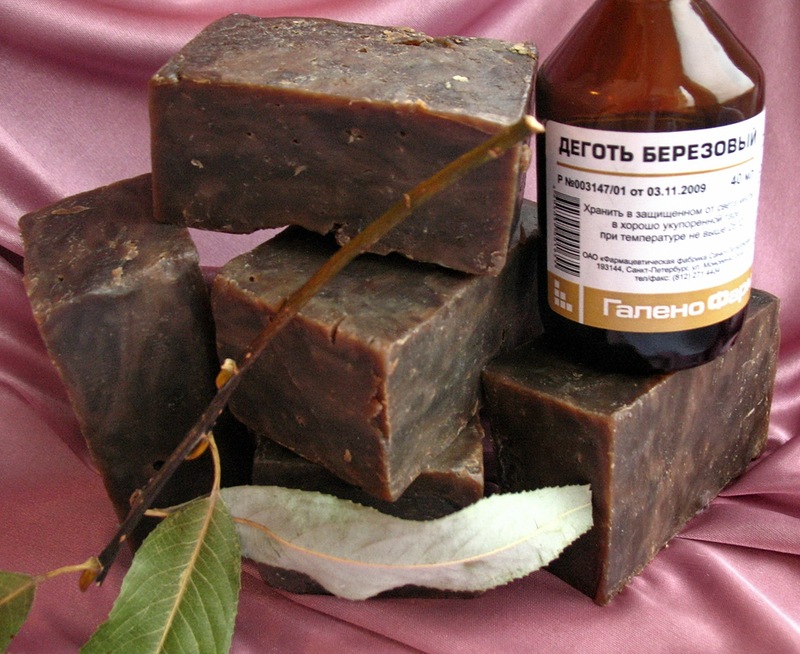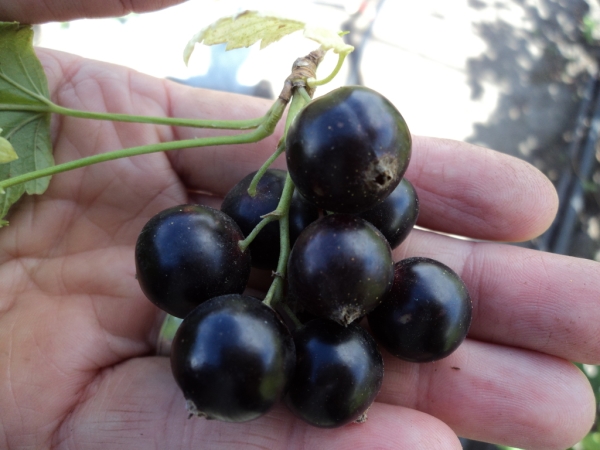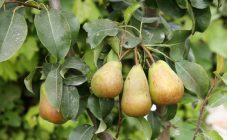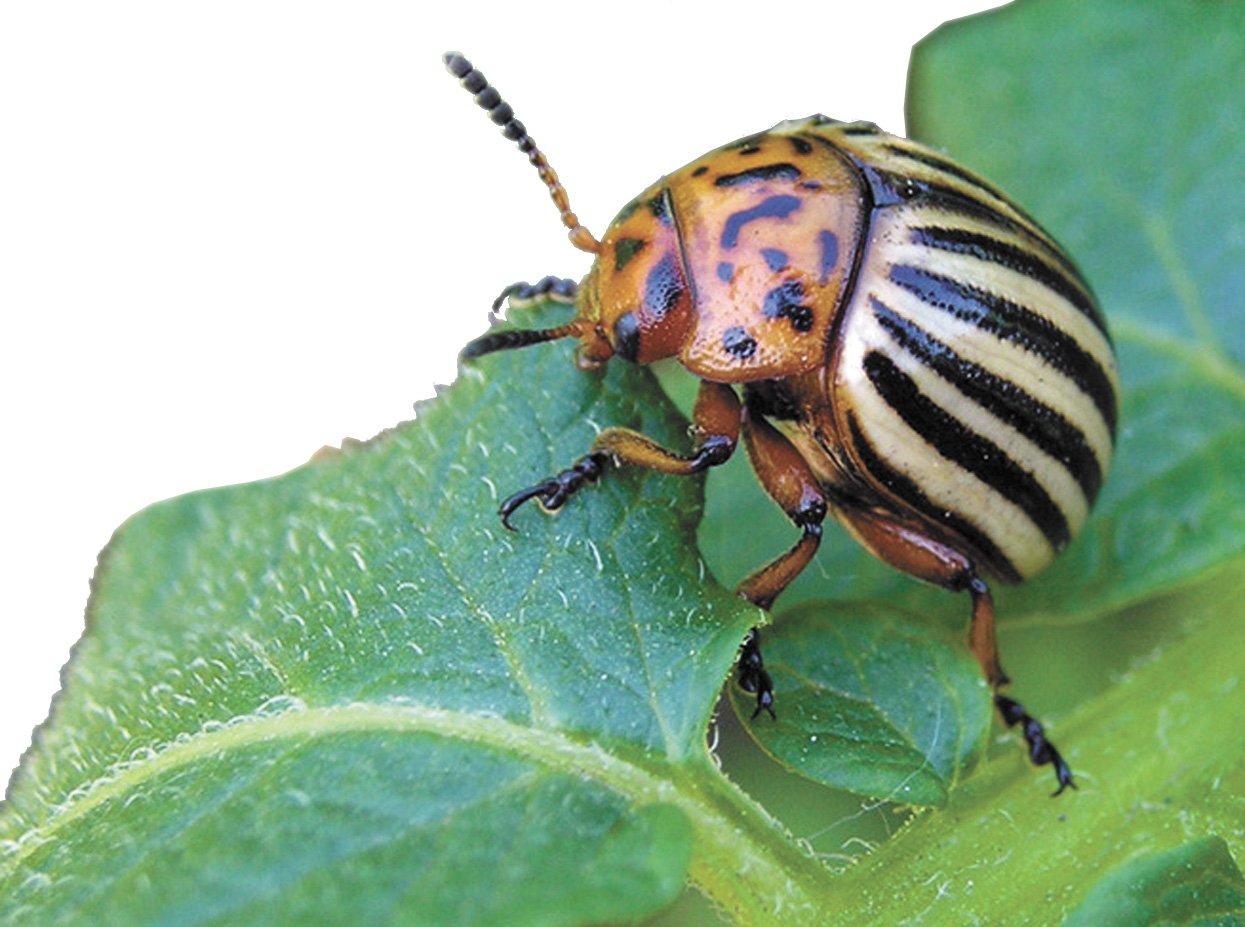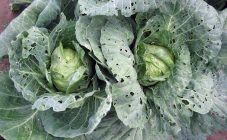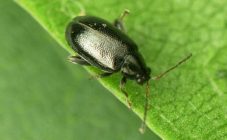Content:
Very often, on the trees in the garden, you can see a sticky leaf rolled into a tube, dotted with small bugs. The garden is attacked by many pests, but this is a sign of aphids. Its danger is that this insect literally sucks out the vital juices of the plant. If the pests are not eliminated, damage to the root and flower bud will cause a decrease in yield and can lead to the complete death of plants.
What is aphid
The most frequent visitor to the garden is aphid. These insects are parasites that carry viruses. They often gather in a colony and settle on most of the plants. A colony of bugs is capable of killing a plant as soon as possible.
The shape of the body and the size of insects may differ, depending on the species, which number about 3.5 thousand. In appearance, this bug may resemble a hemisphere, drop, egg or a circle elongated in length. The size can vary from 0.3 mm to 1 mm. The body is most often soft, transparent. Since the pest is parasitic, it acquires the color of the foliage of the plant on which it settles.
The parasite has good eyesight and hearing. The oral apparatus is the proboscis, with which it pierces a young leaf and sucks it out with juice. Depending on the species, the proboscis can be sharp and long or blunt and short. Also, the insect can be wingless or with wings. Legs are intended for walking, can be jumping.
A humid and warm climate is the best condition for aphid to live and reproduce quickly. Abrupt changes in temperature, rains and drought are considered unfavorable conditions for the life of insects. Flowering, the lower part of the leaf and young shoots are the preferences of the pest. The plant sap is rich in carbohydrates and amino acids, which attracts insects. The tree, as a rule, is additionally dotted with ants that guard the bugs. This is due to the fact that the liquid that is secreted by aphids is sweet and attracts ants.
Spring is the time when pest colonies appear. At this time, larvae hatch from the eggs, laid in the autumn. Asexual reproduction begins when the larvae gain strength. After molting, females that do not have wings hatch. Their number can reach several hundred. When autumn comes, the period for laying eggs on the lactating plants begins.
One tree can be inhabited by several species of these insects. A little description:
- The maximum pest size is 1.5 mm;
- The color depends on the species and can be green, red, black, yellow or brown;
- June is the time when the mating season for aphids begins. Evidence of this is the appearance of the wings;
- The insect lives no more than 14 days. During this time, females are able to lay at least 150 eggs. Another 7 days are spent on the development of the parasite, which begins to suck the juices of the plant, immediately after birth;
- The appearance of aphids on plums entails distortions and spots of rot on the leaves, their twisting and the appearance of mold. All this delays and even destroys the future fetus.
Interesting about pests
- The fluid secreted by aphids that ants like is called honeydew.There are cases when the owners of anthills specifically allowed the pest to multiply so that the ants had something to feast on;
- In some aphid species, the first generation born is almost always wingless;
- From aphids, you can make a tincture on alcohol, to which scientists have attributed the possibilities of aphrodisiacs. This tradition has been preserved in Iran.
Chemical insect control
To obtain a full-fledged harvest, the health of trees must be monitored all year round. Aphid's favorite green plant is plum. Aphids on plums start with the arrival of spring, when the full flow of juices begins. At a level with him, insects wake up, gradually hatching from eggs. When aphids appear on the drain with what to treat - the question that arises in the first place.
The fight against aphid colonies on plums should be started before they lay eggs. Getting rid of insects is easy, because their bodies are soft and unprotected. Any home remedy, even an ordinary soap solution, will be detrimental to them. It complicates the process of getting rid of the pest by twisting the leaf plate, in which the propagated insects hide. That is why it is better to spray the plants before the leaves bloom en masse, that is, during the period of bud swelling.
You can also save the tree by taking care of the birds. Aphids are considered a delicacy for tits, linnet and sparrows. Wasps, flies, ladybugs and lacewing do not refuse exotic food. Peppermint, cilantro, basil and garlic can be planted in the area to scare off the pest. The deterrent condition is a strong pungent odor that creates a natural obstruction.
Fight aphids and ants on the drain at the same time. It is imperative to treat the garden from ants, because they are direct carriers of aphids. When ants start on the plum, you can't think for a long time how to get rid of them. The treatment can consist in a simple winding of the plant with a rag or synthetic winterizer strip soaked in a chemical against goose bumps. Everyone independently determines the way to fight insects.
Comparison of traditional methods and chemical treatments
For safer destruction of the pest, you can use the methods of folk craftsmen. It is proposed to treat plums and other trees with solutions with the addition of natural household elements:
- 200 ml of apple cider vinegar is diluted in 10 liters of water and about 100 g of household soap is added. You need to repeat the procedure several times with a break of 2-3 days. For preventive purposes, treatment is carried out monthly;
- Birch tar is considered universal and useful. You need to take 150 g of tar soap, dissolve in 1 liter of hot water and add another 9 liters. Plants are sprayed with this agent closer to autumn, starting in early August;
- Ash perfectly repels aphids. To protect the plants, the soil is sprinkled with a large layer of wood ash around the stem, dug up everything and watered with heated liquid. Absorbing everything through the roots, the juice is poisoned, and the aphids have nothing to eat, while the fruits do not suffer. Another option is to mix 150 g of ash and 10 liters of liquid with a soap base. For prevention purposes, repeat spraying after a month and a half.
- It is useful to spray with garlic infusion. You need 150 g of garlic cloves, 15 arrows of garlic and 4 liters of liquid. Leave to stand for 2 days. Next, the infusion is diluted with 6 liters of water and the trees are sprayed with the mixture;
- An infusion based on stepchildren of tomato, potato tops and celandine is considered effective against aphids. Take just a few branches, pour, leave for 3-4 days. Dilute the infusion with plenty of water, add a spoonful of powder or soap before processing.
Using folk methods, you need to prepare for the fact that the treatment will have to be repeated more than once. The number of repetitions will directly depend on how badly the tree is infested with insects. In home methods for the destruction of aphids, it is also proposed to use:
- Ammonium alcohol;
- Iodine mixed with milk;
- Soda;
- Mustard;
- Vodka;
- Coca-Cola;
- Tobacco;
- Boric acid.
Processing chemicals
Severely affected plants can quickly get rid of the pest by using chemicals specifically for these purposes. Such preparations kill insects during processing for several hours, but can harm fruits and human health.
A pest that has not been exposed to the insecticide dies upon contact with it within 14 days. The effectiveness of the drug continues over the next 2.5 weeks. If, after chemical treatment, there are survivors on the plants, after 2 weeks it is necessary to re-destroy the aphids.
For safety reasons, it is imperative to use a respirator, special suit and gloves made of latex or rubber. The most effective drugs are:
- Shar Pei is a fast acting chemical composition. Affects insects, regardless of the stage of development;
- Fitoverm is considered a biologically active agent. Suitable for the destruction of aphids in open estates and greenhouses. Can be used to treat indoor plants;
- Karbofos - considered a moderately toxic pesticide. Used to control many insects;
- Aktofit - completely removes the pest within a maximum of 2 days.
How to deal with aphids on a plum may depend on the number of pests, the length of the tree, the weather and your own desire. You can spray it with folk remedies or using chemistry. The main thing is to save the plants from the parasite, because it destroys the color and draws out sap, making the tree weak.
You can remove a swarm of aphids using the folk mechanical method: removing pests with your hands or washing the leaves with a strong stream of water. Although this method will be effective only for short plants.
